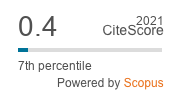Satellite nest architecture and demography of the plant - visiting ant, Camponotus compressus (Fabricius)
Keywords:
Satellite nest architecture, demography, carpenter ants, polydomyAbstract
In the present study the satellite nest architecture and demography of the common and widespread sugar-loving carpenter ant, Camponotus compressus, were determined. The nests were located in soft and moist soil. The dental plaster casts revealed that the vertically oriented satellite nests harbouring brood (42.8 ± 21.12) and worker ants (29.2 ± 8.94) were 51.2 ± 8.17 cm deep. The nests were characterised by the concentration of 4 ± 1.09 chambers, in the upper part of the nest and a single narrow shaft at the lower end. We suggest that the location of the nests chambers close to the nest exit/entrance hole may facilitate rapid communication among the C. compressus worker ants on discovery of extra floral-nectary bearing or homopteran-harbouring plants by a colony member. This study can lead to a better understanding of nest construction mechanisms and the effect of nest architecture on foraging behaviour and organization of an ant colony.
Â


